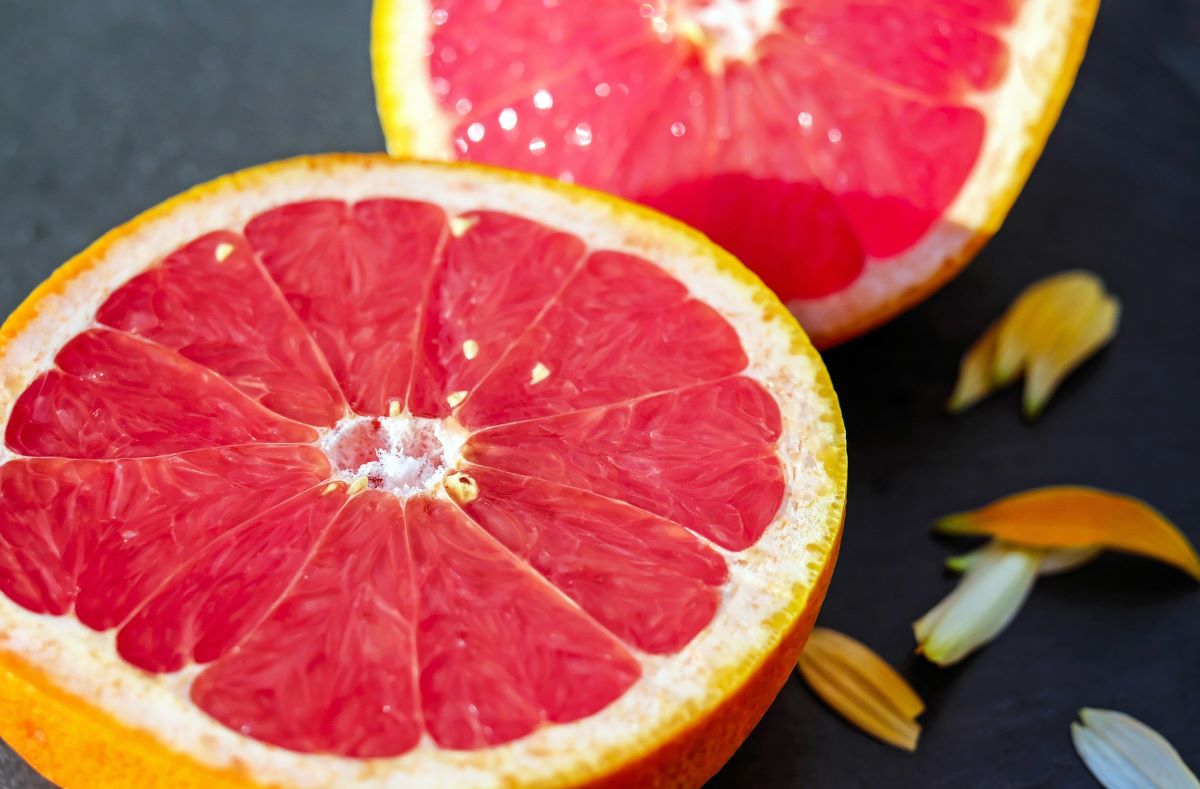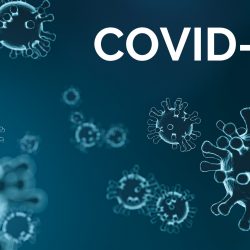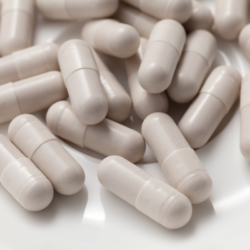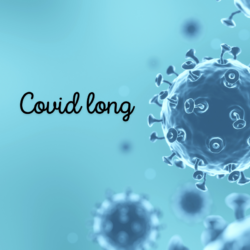“A bitter remedy always has a salutary effect”. Did you know that grapefruit seed extract ,also known asGSE ,has a broad spectrum of action? Yes , it’s a100% natural , antibacterialremedy . However, in the case of digestive mycoses, bacterial and respiratory infections, or allergies, using this medicine is a wonderful idea to help the body eliminate all these microbes.
Rich in flavonoids and vitamin C,Citrus paradisi grapefruit isobtained by mixing grapefruit seed extracts with water and glycerine. You see! There areno other chemicals associated with this antidote. So why risk taking chemical antibiotics that could have harmful effects on the body?
What is grapefruit seed extract?
The grapefruit, the largest of the citrus fruits, measures between 15 and 30 centimetres in diameter and can weigh up to several kilos. It is pyriform in shape, with a skin that is either smooth or grainy, light yellow to green in colour and thick. This skin contains numerous petrol sacs, visible to the naked eye and coloured by carotenoids. It has a large albedo and around 16 to 18 well-separated quarters. Depending on the variety, the pulp can be white, pink or more colourful. It often contains large, ovoid, pointed pips that are mono-embryonated.
Production process
Grapefruit Seed Extract (GSE) is obtained by glycerine extraction of grapefruit seeds, with a small amount of pulp and mesocarp. The process begins by collecting, washing, drying and then grinding the ingredients to produce a powder concentrated in active compounds such as flavonoids (naringin, hesperidin, quercetin) and vitamin C. This powder is then mixed with vegetable glycerine, heated under pressure, cooled, filtered and treated with ultra-violet light.
EPPs on the market should contain only concentrated grapefruit seed extract and glycerine. However, some products contain chemical preservatives such as benzethonium chloride or parabens, due to the transformation of flavonoids into quaternary ammoniums during extraction. For food supplements, it is important to avoid these preservatives. Optimising the extraction of phenolic compounds is therefore crucial.
The way in which PPEs are manufactured is often kept secret. A study by Reagor et al. in 2002 revealed the process for Citricidal®: grinding the seeds and pulp into powder, dissolving in water, distillation, spray-drying, dissolving in glycerine, adding ammonium chloride and ascorbic acid, and pressure treatment. The finished product contains 15 to 19% ammonium chloride and 25 to 30 mg/g ascorbic acid. Another study in 2006 proposed a more succinct method: extraction of the seeds with glycerine at high temperature, combined with UV radiation or catalytic conversion.
The chemical composition of EPPs varies according to the raw materials and the conditions under which the fruit is grown, thus influencing their effectiveness. Manufacturers therefore choose the fruit with the best qualities to meet market requirements.
Composition
The grapefruit seed extracts (GSE) studied scientifically come mainly from Citrus x paradisi Macfad, with no mention of extracts from Citrus maxima (Burm.) Merr.
- Flavonoids: Flavonoids are the main active compounds in EPPs. However, their qualitative composition is often not detailed on labels. Studies carried out between 2002 and 2014 identified various flavonoids such as quercetin, hesperidin, neo-hesperidin, naringin, apigenin, rutoside, poncirin and kaempferol-glucoside. The quantity of flavonoids in EPP varies from 400 to 5000 mg per 100 g.
- Vitamin C: Like flavonoids, vitamin C is a major component of EPP and is often indicated on labels. Studies have confirmed its presence, but it remains uncertain whether it comes from the processing of the seeds or whether it is added subsequently.
- Other compounds: Although other compounds such as limonoids, tocopherol, or citric acid are naturally present in grapefruit seeds and pulp, their presence in PPE is not systematic or mentioned on labels.
- Excipients: Glycerine is commonly used in EPPs for its sweetening and solvent properties, facilitating the dissolution of flavonoids and vitamin C. Glycerine is sometimes replaced by agave syrup.Water is also a frequent excipient, diluting the EPP but reducing its concentration.
- Preservatives: Several studies have revealed the presence of synthetic preservatives such as benzethonium chloride, benzalkonium chloride, triclosan and methyl-paraben in certain PPE. Although controversial, certain substances are sometimes used to prolong the shelf life of grapefruit seed extracts (GSE).
The credibility and safety of GSEs are the subject of debate. It should be noted that the studies on GSEs mainly concern American products. Legislation on food additives in the United States differs from that in France.
Its indications
According to the manufacturers, grapefruit seed extracts (GSE) have numerous properties. The most commonly cited is their antibacterial activity, often described as “natural antibiotics“. GSEs are also touted for their ability to protect cells against oxidative stress, boost natural defences and contribute to the proper functioning of the immune system. Key claims for EPPs include maintaining microbial balance, supporting immune defences and promoting general wellbeing. Claims relating to inflammation and oxidative stress are also common. This section will examine these claims in the light of the available scientific literature.
Curative product
EPP is a palliative remedy for treatingviral digestive bacterial infections and respiratory tract problems. Its strength lies in its ability to eliminate only microbes. It does not destroy intestinal flora. Don ‘t worry when you use this product, as there are virtually no side effectson your body . What’s more, the presence ofantimicrobialelements in grapefruit seed extract also helps tocombat small superficial ulcers inside the mouth (canker sores).
Antibacterial action
Laboratories highlight the antimicrobial properties of EPP. They claim that EPP is effective against 800 strains of bacteria and viruses. They are also said to act against 100 strains of fungi and several single-cell parasites. Allan Sachs describes EPPs as an ‘ideal antibiotic’. According to him, they have a broad spectrum of action and are powerful. They are effective in low concentrations and are non-toxic. EPPs do not affect the immune system. They spare useful bacteria. What’s more, they are of natural origin and hypoallergenic. EPPs are also biodegradable and compatible with other natural remedies. Finally, they are affordable.
A study conducted by Ionescu G. in 1990 revealed that EPP is more effective against Gram bacteria than Gram- bacteria. Another study by Reagor L. in 2002 confirmed the antibacterial activity of EPP, showing efficacy against all the strains tested, including those resistant in previous studies.
Other studies between 2004 and 2013 investigated the antibacterial effect of EPP. Cvetnic Z. & Vladimir-Knezevic S. showed that their ‘homemade’ EPP inhibited the growth of Gram bacteria. Bernatoniene J. et al. in 2013 found that EPPs were particularly effective against Staphylococcus aureus, Bacillus cereus and Enterococcus faecalis. In 2005, Oyelami O.A. studied the use of grapefruit seeds in the treatment of urinary tract infections, with promising results.
As for the mechanism of action, Reagor L. suggested that the acid pH of GSEs could be crucial, but this theory was refuted by Bernatoniene J. Heggers J.P. and Cvetnic Z. & Vladimir-Knezevic S. proposed that EPPs alter the bacterial cell membrane, inhibiting enzymatic activity and causing loss of the cytoplasmic membrane.
Antifungal properties
Microscopic fungi are pathogenic agents that can cause serious infections, especially in people with weakened immune systems or altered commensal flora. These infections can be transmitted by human, animal or soil contact. Their treatment is complex and often lengthy, and can be harmful to the liver, as in the case of terbinafine.
However,grapefruit seed extract (GSE) is emerging as a promising antifungal agent, due to its non-toxicity for humans. It therefore represents a potential alternative in the treatment of fungal infections. Studies have demonstrated the efficacy of EPP against various fungi. In 1990, Ionescu G. demonstrated its efficacy against 93 strains of yeasts and moulds, including Candida and Aspergillus. Cvetnic Z. & Vladimir-Knezevic S. in 2004, and Bernatoniene J. et al. in 2013, confirmed these results, particularly against Candida albicans.
A 2003 Polish study by Krajewska-Kulak E. et al. revealed that EPP was particularly effective against Candida albicans, compared with other strains of Candida, dermatophytes and moulds. EPP is thought to act by disrupting the membrane of fungi, causing the rupture of their lipid bilayer, and may induce apoptosis in yeasts. This action is accompanied by changes in the mitochondria and enzymatic activity of the fungi.
All in all, EPP is proving to be a powerful and safe antifungal agent, offering a valid alternative to more toxic conventional treatments.
Antiviral and antiparasitic activities
Grapefruit seed extract (GSE ) is often cited for its antiviral and antibacterial properties, allegedly acting on more than 800 strains of bacteria and viruses. According to a study by Krajewska-Kulak E. et al. in 2003, Citricidal®, an EPP marketed in the United States, demonstrated antiviral efficacy in tests carried out by the United States Department of Agriculture (USDA ) in the 1980s, notably against viruses affecting cattle and dogs. The USDA’s Pasteur Institute has also recognised its effectiveness against the herpes virus and the influenza virus.
However, this study remains the only scientific source confirming the specific antiviral activity of EPP. Flavonoids, the components of EPP, are recognised for their antiviral action, particularly against the Herpes Simplex Virus (HSV), responsible for herpes, chickenpox and shingles, as well as the respiratory syncytial virus, polioviruses and the Sindbis virus. They act by inhibiting viral polymerase and binding to viral nucleic acid or viral capsid proteins. Kaempferol, a flavonoid, inhibits replication of HSV, human coronavirus and rotavirus.
Although little documented, the antiviral activity of grapefruit seed extracts (GSE) could be due to the presence of flavonoids. These compounds are potentially effective against viruses such as herpes simplex virus (HSV), respiratory syncytial virus and human coronavirus.
EPPs, known for their antibacterial and antifungal properties, also act against numerous parasites. Allan Sachs, in his 1997 book, mentions the effectiveness of EPPs, at low concentrations, against Entamoeba histolytica and Giardia lamblia, which are responsible for intestinal disorders. Research by Sharamon S. & Baginski B.J. confirm this parasitic activity, including against Trichomonas vaginalis.
Preventive product
Grapefruit seed extract may be curative, but it isalso an excellent antifungal drug that prevents severe gastric ulcers; antioxidant: it protects the body’s cells from the effects of free radicals .Thanks to its therapeutic properties, it helps to tone up the body ‘s immune system and reduce the prevalence of chronic fatigue. Your body has had enough of chemicals, so go back to organic products to boost your immune defence with all-natural trace elements and vitamins.
Immunostimulant role
Although popular literature often mentions an immunostimulant effect of grapefruit seed extracts (GSE), no scientific publication specifically confirms this effect. Sharamon S. & Baginski, in 2007, suggest that EPP supports the immune system and protects against the proliferation of infections in immunodeficient patients. Nevertheless, to better understand this potential effect, it is relevant to examine the impact of the main components of EPP, notably vitamin C and flavonoids, on the immune system.
Flavonoids are known for their immunostimulant properties. According to Havsteen in 2002, they stimulate the activation of cytotoxic T lymphocytes and NK cells, promote the action of macrophages, stimulate the synthesis of antibodies via the production of cytokines, and directly influence the synthesis of certain cytokines. In addition, quercetin, a type of flavonoid, was studied by Chirumbolo in 2010 and found to have an immunostimulant action, acting on white blood cells and intracellular signals in the immune system.
Vitamin C plays a crucial role in stimulating the immune response. A randomised double-blind study by Penn et al. in 1991 showed that patients supplemented with vitamin C had a significant increase in the number and proliferation of T lymphocytes. Another study in 2011 by Ströhle et al. confirmed the importance of vitamin C in stimulating the immune response, revealing that competent immune cells accumulated vitamin C and that its deficiency reduced resistance to pathogens.
In conclusion, although the specific immunostimulant effect of EPPs has not been directly documented, their flavonoid and vitamin C composition suggests a potential immunostimulant activity.
Antioxidant activity
Laboratories marketing grapefruit seed extract (GSE ) highlight its antioxidant activity, particularly in protecting cells against oxidative stress and fighting free radicals. The body defends itself against these free radicals via three main mechanisms: the use of antioxidant molecules as ‘radical traps’ (e.g. glutathione, vitamins A, C and E), the transformation of free radicals into less toxic metabolites by enzymes (e.g. superoxide dismutase), and the repair of lesions induced by free radicals.
The flavonoids and vitamin C present in EPP are known for their antioxidant properties. According to a study by Bruno Tirillini in 2000, EPP shows strong antioxidant activity, mainly due to hesperidin and naringin. In 2004, Giamperi et al. analysed EPP in different solutions, concluding that it had significant antioxidant activity, which was more marked in an aqueous solution.
Other studies have highlighted the specific protective effects of EPP. Dembinski et al. in 2004 showed that EPP protects against induced pancreatitis in rats, by improving pancreatic blood flow. A study by Brzozowski et al. in 2005 revealed that pre-treatment with EPP in rats with gastric ulcers reduced lipid peroxidation and increased superoxide dismutase activity.
In 2007, a study by Saalu examined the effect of in-house EPP as a pre-treatment with epirubicin, a chemotherapeutic molecule. The results indicated that the EPP limited the testicular toxicity induced by epirubicin, reducing oxidative damage.
These studies therefore suggest that the antioxidant activity of EPP may play a significant protective role against various forms of oxidative stress and cellular damage.
Other properties
No studies have directly demonstrated the anti-inflammatory effect of grapefruit seed extract (GSE). However, research suggests this property for some of their components. Among them, vitamin C seems promising. It is thought to inhibit a key factor in inflammation, NFκB. This factor is linked to the release of pro-inflammatory substances.
Several studies confirm the anti-inflammatory effect of vitamin C in humans. In particular, it reduces levels of C-reactive protein (CRP) and IL-6. These substances are markers of inflammation. The studies concerned include those by Ellulu M.S. et al. (2015), Block G. et al. (2004), and Wannamethee S.G. et al. (2006).
Vitamin C also inhibits pro-inflammatory cytokines in chicks. These include IL-1, IL-6 and IFNγ (Jang I.S. et al., 2014). In children with mouth ulcers, vitamin C reduced neutrophil activity (Yasui K. et al., 2010). These results reinforce the idea of vitamin C’s anti-inflammatory potential.
The flavonoids in EPP, such as hesperidin and quercetin, combat inflammation. They block Cox and Lox enzymes. Hesperidin reduces prostaglandins and thromboxane in the body. Quercetin works in the same way, but has been tested in the laboratory. Another flavonoid, naringenin, slows down inflammation caused by cytokines in macrophages. In mice, it reduced levels of IL-4, IL-13 and IgE.
A study on rats suffering from arthritis revealed that quercetol and hesperidin had stronger and more prolonged anti-inflammatory activity than phenylbutazone, a reference anti-inflammatory (Guardia T. et al., 2001).
EPP can also be used as a skin care product to eliminate fatty tissue in cases of cellulite, treatacne or resolve dandruff problems.
How should grapefruit seed extract be used?
Grapefruit seed extract is available in liquid and capsule form. It can be taken orally or applied topically to the skin. The recommended dose varies according to use. It is important to follow the manufacturer’s instructions or consult a health professional before starting to take grapefruit seed extract.
The galenic forms of grapefruit seed extract (GSE) available on the market are mainly drinkable solutions, but some laboratories also offer capsules, sprays or powders. The dosage recommended by the laboratories varies according to whether the product is to be used internally or externally.





